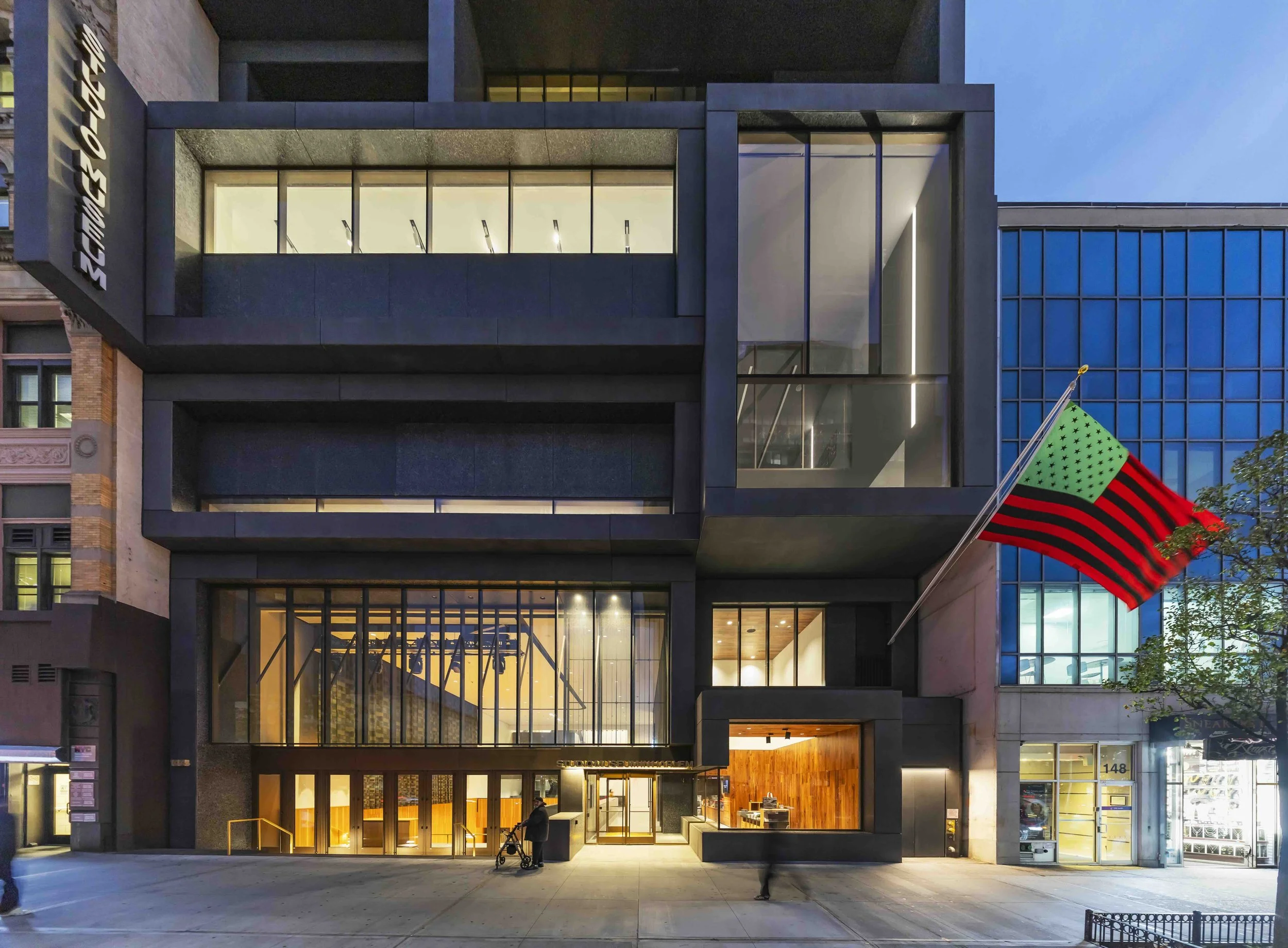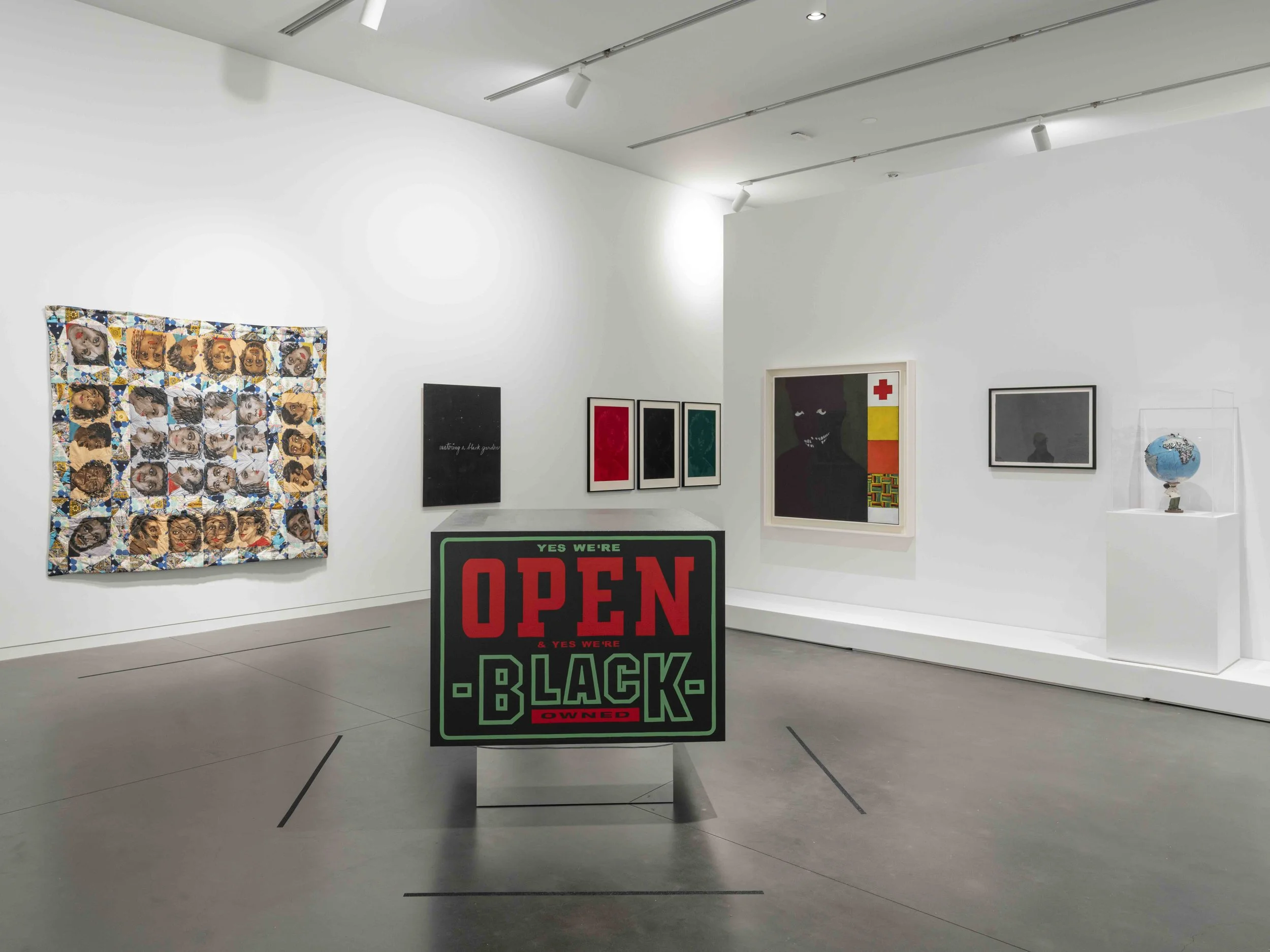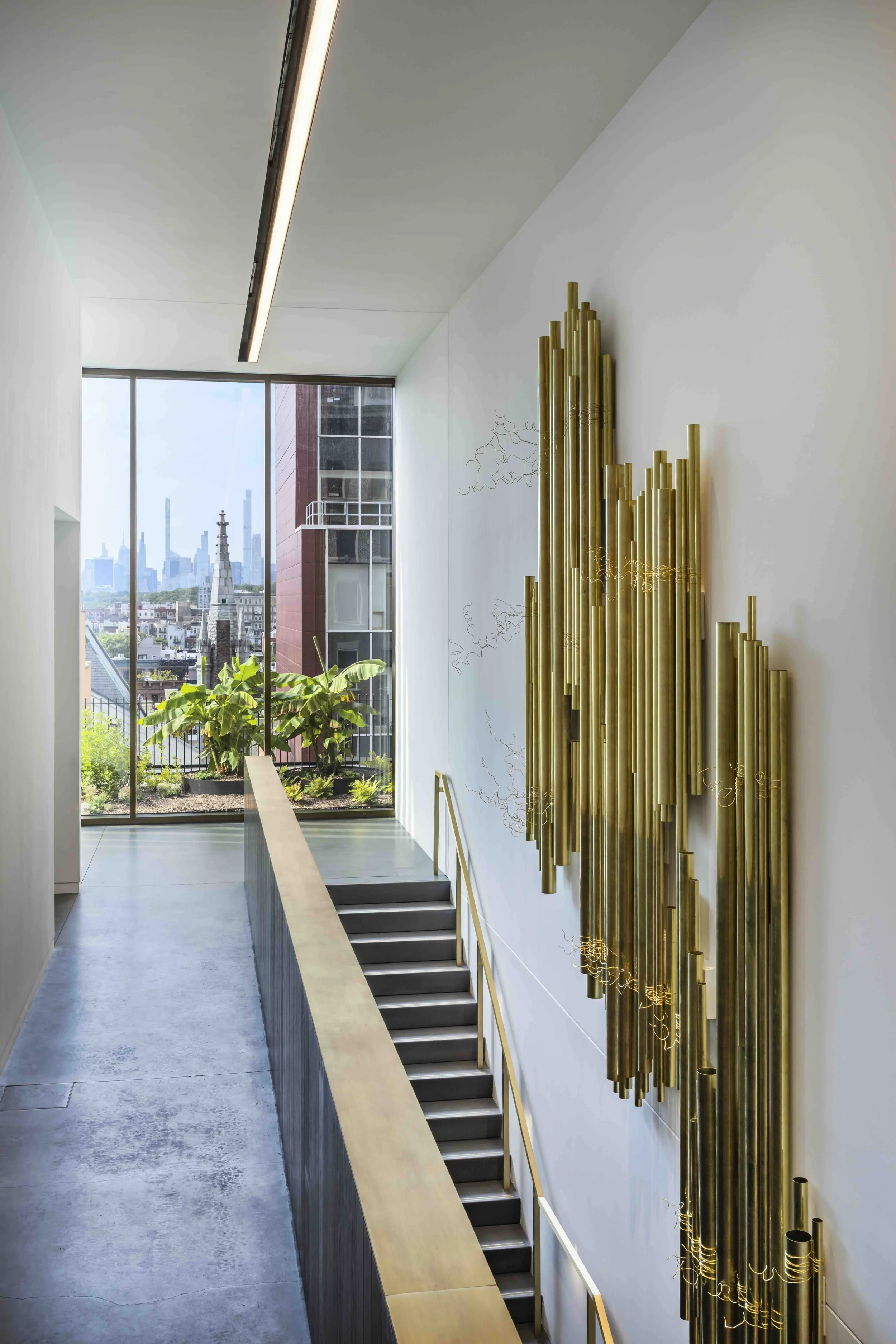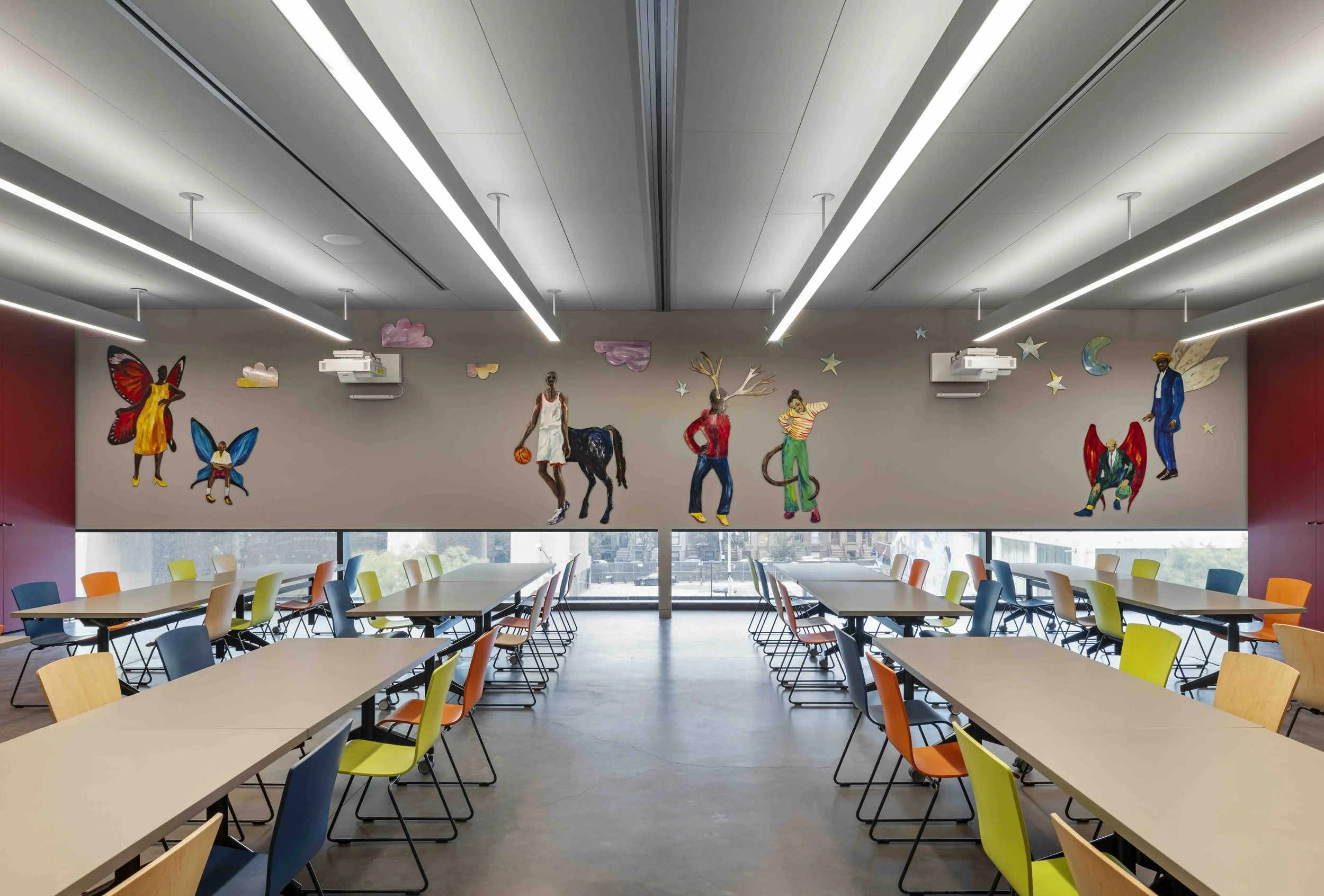Reclaiming the Fantastic at the Studio Museum in Harlem
Across from the legendary Apollo Theater and Hotel Theresa stands the newly reopened Studio Museum in Harlem. Since its first home in a loft above a liquor store, the museum has doubled in size, accommodating space tailored to Black art, thought, imagination, creation, and audacious conversation—laying the foundation for legacies to come. The museum’s first community day welcomed visitors with the rhythm of drums, a procession echoing from The Stage to The Stoop, and the onset of the new exhibition From Now: A Collection in Context (2025).
Its homecoming collides at a moment when Black cultural spaces and public trust and safety face constant pressure to meet the evolving needs of their communities in today’s political sphere. The Studio Museum’s resurgence feels reassuring, a testament to the vital role Black institutions and artists play in sustaining the trajectory and accessibility of art history.
The curation envelops you instantly: a selection drawn from over 9,000 works of photography, prints, and mixed media is hung salon-style, accentuating Black mannerisms and figures embracing their body’s postures and personhood. The collection quickly became popular among visitors, documenting photos and selfies of themselves and their families—innately contributing to the preservation and celebration of Black stories.
The exhibition begins on the sixth floor, where the visual timeline, To Be a Place (2025), encompasses the museum’s history, past exhibitions, and defining moments over the years. Neighboring Camille Norment’s Untitled (Heliotrope) (2025), composed of brass tubing, explores sound as a perspective. It’s omnipresent: music and sound have been central to Black expression and a theme explored throughout the galleries.
From Now: A Collection in Context (2025) magnifies the examination further on the second and third floors. Nikita Gale’s RUINER XIX (2022), inspired by performance venues and recording studios, recontextualizes the energy of sound into a kind of relic. Cement-soaked terrycloth twists through an aluminum gate, a gritty interpretation of scenes where music moves a crowd. Nearby, Dave McKenzie’s foam-core sound system, A Small Monument (2024), and Malvin Gray Johnson’s painting Swing Low, Sweet Chariot (1928–29), provide visual aids that amplify and honor the mobility of musical genius and its impact on our creativity. Curator Habiba Hopson and educator Madison Smith emphasize music’s power to guide our encounters with abstraction, inviting viewers to use their discomfort as a compass for navigating the unfamiliar. They frame abstract forms and sounds not as barriers but as essential stages in the unfolding of curiosity. By confronting these conversations, we begin to recognize the many ways abstraction appears in everyday life, through emotion and memory.
From wall to wall, themes of gold, nature, spirituality, and the body shape the sensory odyssey. This collecting of material archives to reconnect people of African descent to their roots manifests as an intentional act by artist Rosana Paulino, who uses mythology to investigate overlooked Afro-Brazilian feminist histories. In Jatobá series (2019–23), she imagines her figures as “archetypes of female wisdom.” The women appear monumental: legs become tree trunks; feet become roots that extend to the bottom of the canvas. These bodies, intricate and intertwined, exist between reality and memory, threading thoughtful discourse beyond what is visible through fascination and contemplation.
The works of Tom Lloyd, a trailblazer whose electric light installations challenged conventional thinking and helped shape the museum’s opening in 1968, return to this exhibition to affirm a familiar truth: some artists are ahead of their time. Lloyd’s work was initially scrutinized for not representing Black art or Black people, as it was not explicitly figurative; instead, he explored notions and redefinitions of the art object. Today, his retrospective feels like the pulse of the people: inviting, bright, enthusiastic, and full of awe. It simulates the moment of a child’s unadulterated creative autonomy and expression—a narrative for all ages.
This ethos of imagination is carried in the new site-specific work at the museum’s Education Workshops by Christopher Myers, Harlem is a Myth (2025). The work and space are imagined as a place where multigenerational voices come together and illuminate their inner stories through art. It echoes former artist-in-residence Louis Cameron’s print, WHAT HAPPENS TO A DREAM REALIZED (2025), a reinterpretation of Langston Hughes’s famous question, recast in a hopeful turn. If evolution is born from thinking beyond the window of our current imagination, Harlem is a Myth grants permission to think of worlds reimagined from our daydreams.
Collectively, the Studio Museum’s new presentations reinforce the artist’s call to action: to tell a story, hold up a mirror, and confront whatever truth emerges. To braid intention with thought, which in turn reveals more questions—the consequential wheel of success. Through the silent philosophy that Black art is both free-form and freedom itself, we find ourselves immersed in the richness of the museum’s subcultures, reframing how exhibitions and art are understood in a space where Black voices propel history’s narrative forward through the fantastic.
The Studio Museum in Harlem reopened to the public on November 15, 2025.





